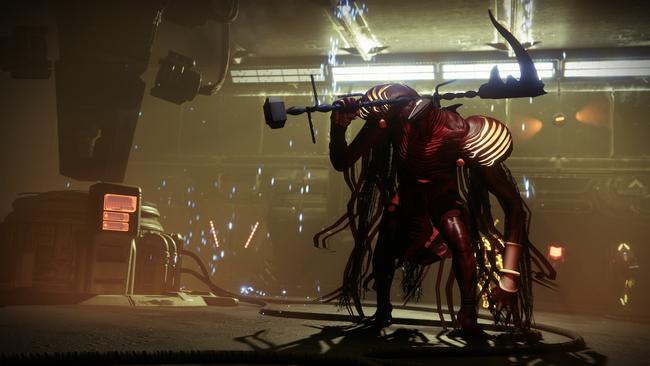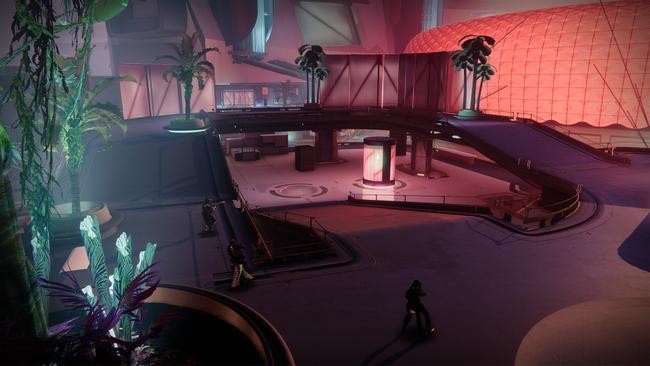
Returning to Destiny 2, it's hard to come to grips with being left behind
The last time I'd played Destiny 2, it was still exclusive to the Battle.Net launcher on PC. I had pre-ordered Shadowkeep with the intention of playing it with friends who had loved Destiny 2 themselves, but I ultimately never ended up playing the expansion when it was still current content. Soon after, once Bungie announced the Destiny Content Vault in the lead-up to 2020's Destiny 2: Beyond Light, I'd essentially written off ever returning to the game entirely.
Nearly three years later, I was offered the opportunity to check out Destiny 2: Lightfall, the game's latest expansion. Along with many of those very same friends I'd played Destiny 2 with back in the day also returning to the franchise themselves, it felt the time was right to give the game an honest second-chance; an opportunity to see if the changes that Bungie has made to the formula since 2020 have improved the game, and if it's worth an honest recommendation to a lapsed player.

The most fundamental change Destiny 2 has gone through since last I played is the act of buildcrafting. Previously, player loadouts for their guardian were relatively static; you could choose an Arc, Void or Solar subclass, you could choose a Super ability, and... not much else. In the years since, you now have access to a much larger variety of options to choose from. Beyond Light brought the advent of "Darkness"-based subclasses, with the Ice-themed Stasis. Most recently, Lightfall has introduced Strand; every subclass now has access to a wide variety of new abilities - grenades, melee attacks, significant modifiers that you can slot in that can drastically change your playstyle - and you get the sense that you can truly make your Guardian feel like it's your own personal expression of how you want to play the game.
Weapon and Armor mods supplement whatever playstyle you've decided to cater to, and all layer on top of the randomly-generated weapon skills and armor stats that already played a role in how players worked toward the ultimate builds when I last seriously played Destiny 2 in the past. Even discounting all of the new strikes, raids, dungeons, and patrol zones that have been added to Destiny 2 over the years - it's these fundamental changes to how your character actually works that best represent how much Destiny has evolved. Before I would have been hesitant to actively call Destiny 2 an RPG, but now it would be reductive to call it anything else.

To say that all of these changes can be more than a bit overwhelming would be to put things mildly. I've only been playing Destiny 2 again for the better part of a week, and even once I've exhausted the current Lightfall content I'll have to engage with Beyond Light's content in order to unlock Stasis and all of its abilities. Come later this week I'll have the first real opportunity to put whatever build I've managed to scrape together to the test with the new raid and come next month, I'll have the opportunity to contend with Grandmaster Battlegrounds; what I gather to be the most popular endgame activity of late.
My main complaint with Destiny 2 these days has been, and continues to be, about how Bungie will continue to "vault" content that players have already paid for. I'm lucky enough that I'd at least played through Forsaken before Bungie started to phase out older content, which means that I can at least go back to Shadowkeep, Beyond Light, and The Witch Queen to get a small sense of where the narrative has been, and where it might continue to go. While I believe I'm coming to terms with why exactly Bungie made the choice to remove content I'd paid for - this game is seemingly held together by duct tape; a sentiment that I can understand as a hardcore Final Fantasy XIV player - it's hard to ignore that even outside of the gameplay changes, it's essentially impossible for new and returning players to not feel left behind.

Expansions might remain in the game now and going forward, but the Seasons that accompanied them are no more; storylines and content that directly fleshed out the Destiny 2 gameplay loop and built up the story from expansion to expansion. I might be able to play The Witch Queen, for instance, but I'll never get the full experience that others had playing it when it was new. I can only get the opening chapters of the story; while the rest have been scrubbed from the game and are not likely to ever return.
For current Destiny 2 players, this doesn't matter much. Players that are already on the treadmill will certainly be playing the Seasonal content for Lightfall as it releases; much as they did for Shadowkeep, much as they'd done for Beyond Light, and much as they had for The Witch Queen. Meanwhile, I can hear about what content and stories had been like when they occurred; I could watch a video to try and catch a glimpse of what I'd missed, I could watch a lore summary in an attempt to fill in the gaps for the broader picture of the story; but it can't and won't be anywhere near the same thing.
I'll keep playing Destiny 2 for the foreseeable future. I'd already enjoyed Destiny 2 when I last played, and the mechanical changes are more than enough to keep my interest now having returned. Since I have access to this expansion's seasonal activities, I might as well engage with them; not because of FOMO, but more out of a desire to better understand how a Destiny 2 expansion's lifecycle actively works. At this point, I want to truly understand what drives the players that continue to make Destiny 2 the main game that they return to time and again. There's something special about Destiny; I'd want nothing more than to be able to see it for myself.